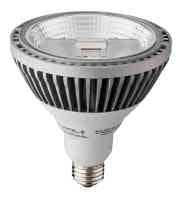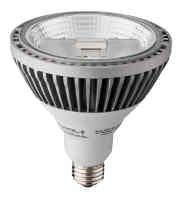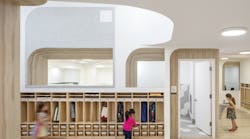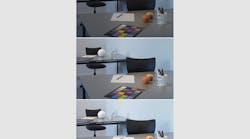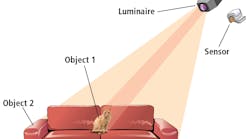The US Department of Energy (DOE) has published two reports on LED-based PAR38 retrofit lamps including an updated quantitative Caliper report on the lamps and a subjective report on light quality in which lighting designers rated various products. The Caliper report is an addendum to Report 20 in the DOE Caliper series that was initially issued in 2012, and the addendum covers six additional lamps and three additional benchmarks focused on the performance characteristics of the LEDs. The subjective report has been called Caliper 20.1 and covers the evaluation of beam quality, shadow quality, and color quality by lighting professionals.
Both of the new publications are focused on PAR38 solid-state lighting (SSL) products such as the Acuity Acculamp pictured nearby. The DOE focused on the PAR38 lamp because of the widespread popularity of that form factor in the PAR family of lamps. In actuality, the Caliper 20.1 report is the first of four additional reports that will focus on various aspects of PAR lamp performance with flicker/dimming, stress testing, and lumen/chromaticity sub-reports yet to come.
The addendum brings the number of PAR38 lamps being tested by the DOE in Round 20 testing to 38, and concludes that all of the products offer better energy efficiency than halogen lamps. Moreover, the report states that the LED PAR38 offerings now include lamps that span the broad range of beam angles of similar lamps based on legacy sources, ranging from 8° to 64° patterns, and offer the color quality attributes needed to replace the halogen incumbents.
With the exception of one lamp, the LED products offer efficacy ranging from 44 lm/W to 79 lm/W. Moreover, all lamps but one had a power factor greater than 0.7. The DOE concluded that continued expansion of LED PAR38 technology will essentially enable complete displacement of conventional sources in the segment although pricing will gate such a progression.
Meanwhile, the DOE through its Pacific Northwest Nation Laboratory (PNNL) in Fairview, Oregon took the additional PAR38 testing as an opportunity to arrange mockups for subjective testing of the lamps. Members of the local Illuminating Engineering Society (IES) were invited to observe 26 different lamps under test, including LED and conventional sources, and completed a questionnaire on beam quality, shadow quality, and color quality.
The PNNL mounted the lamps on a truss with each focused on an object against a white wall — for example, a board with color and pattern samples for the color quality testing. The lamps were controlled so that all provided similar illuminance at the center of the target.
The LED lamps performed especially well in narrow flood beams. One LED lamp that used a diffuser lens stood out in the spotlight category. Two LED-based products performed well in wide floodlight applications. The one common theme that ran through positive results for LED lamps is that the lamps based on single LED emitters performed the best. That result is almost certainly attributable to the fact that you can more easily design optics to control the beam pattern from a single emitter relative to a group of LEDs or a chip-on-board (COB) LED (www1.eere.energy.gov/buildings/ssl/reports.html).
